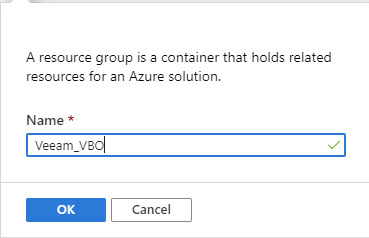Veeam Backup for Office 365 – Upgrade to V4
Background
With the release of Veeam Backup for Office 365 in the backend of 2019, Veeam has moved the game on in terms of product functionality. Until now, Veeam lacked any kind of integration with public cloud-based object storage. Many of Veeams competitors have operated in this way for quite some time, but they are typically SaaS based and do not offer the flexibility and control in terms of backup and restore that Veeam offers for Office 365.
I have been running V3 in house for quite some time and to be honest, not really had to touch it, “It Just Works” as Veeam would say. But now was the time to take a look at upgrading the product and checking out some of that object storage integration.
Let’s get to it
Upgrade procedure
So the first part is really just a next, next, next, done process. Nothing of significance to report but I will detail the steps below.
Start the installation wizard. Yeah boi, I want to upgrade.
Accept the EULA.
Next
Next.
Finish.
And that’s it done!
Object storage you say?
let’s take a look at how the object storage integration works. Backups write to object storage directly but there are some Veeam smarts that are stored locally that optimise the process for backup and recovery operations. The smarts being metadata. Information about the location of the backup data and its contents in the object store is held on a local backup repository in these metadata files. Now this is a good thing, to perform a restore you do not have to interrogate every piece of information held in object storage and equally, you do not need to recover a large amount of data only to retrieve a small subset of that data. We have all know about egress charges from the public cloud. Being able to wrap any kind of smarts around data retrieval to minimise the egress cost is a welcome edition.
Let’s take a look at how to add Azure Blob storage to our Veeam for Office 365 install. The steps will include creating the necessary storage targets in Azure as well.
First of all the software upgrade process does not upgrade the backup repository. Upgrade the existing backup repository first.
Right-click.
Upgrade.
Now we are going to add an Azure Blob repository.
Select the object storage type. Note other options are available.
At this point, I flip over to Azure to provision the storage. We need to create a storage account. My Azure subscription is CSP based, but this could easily be achieved with free azure trial credits or credit card access.
You can see my CSP subscription, I need to assign this storage account to a resource group. Let’s create a new one. Note I also changed the default storage options to save on cost. Cool storage and only LRS storage.
Give the resource group a name.
Define from where users will be able to access the storage. I chose public access for the purposes of this demo. You may choose to lock it down further.
I stuck with the defaults here. I do not need to make use of the additional services.
You can choose to tag the storage account. It makes finding it in Azure at a later date easier.
And there you have it, a new storage account.
Now, before you can add the shiny new storage account to Veeam, you need to grab the access keys and storage account name.
Browse to the storage accounts.
Browse to the access keys. Make note of the storage account name highlighted at 2 and the key highlighted at 3.
Pop those details into the Veeam object storage add wizard.
The next screen will ask you to select a container (a folder) within the blob storage to save the backup data to.
Back in Azure, browse to containers and add a new container.
Give the container a name. Make it something relevant.
And then it will be available to choose in the storage wizard.
Backup cache
Or the metadata store I was talking about earlier. You can not convert an existing backup repository into a backup cache store, you will need to create a new one.
Create a new backup repository.
Point it to a folder on the backup repository server.
And enable the object storage option.
Done!
Conclusion
The upgrade process is straight forward, adding blob storage is pretty easy once you know how to.
Some further reading you may like to take a look at, how to migrate existing backups to object storage. Check it out here.































